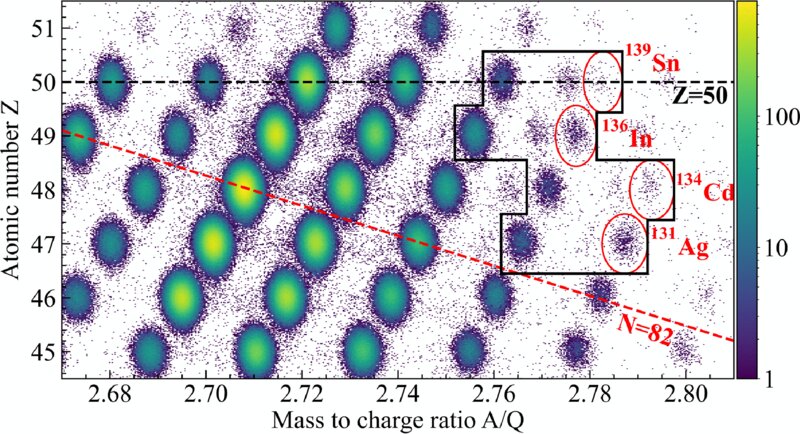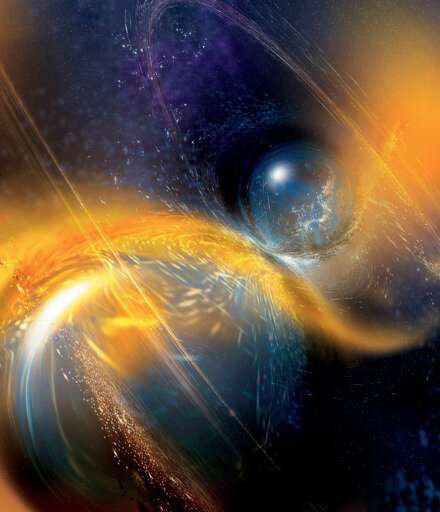
Models for how heavy elements are produced within stars have become more accurate thanks to measurements by RIKEN nuclear physicists of the probabilities that 20 neutron-rich nuclei will shed neutrons.
Stars generate energy by fusing the nuclei of light elements—first hydrogen nuclei and then progressively heavier nuclei, as the hydrogen and other lighter elements are sequentially consumed. But this process can only produce the first 26 elements up to iron.
Another process, known as rapid neutron capture, is thought to produce nuclei that are heavier than iron. As its name suggests, this process involves nuclei becoming larger by rapidly snatching up stray neutrons. It requires extremely high densities of neutrons and is thus thought to occur mainly during events such as mergers of neutron stars and supernova explosions.
The neutron-rich elements produced by rapid neutron capture can lose neutrons through another process known as beta-delayed neutron emission.
Ultimately, astrophysicists dream of developing models that can accurately reproduce the natural abundances of the elements in the Universe. To achieve this goal, they need to combine astrophysical observations with measurements on nuclei in the lab.
Now, Shunji Nishimura of the RIKEN Nishina Center for Accelerator-Based Science and his co-workers have measured the possibilities that 20 neutron-rich nuclei will emit one or two neutrons.

Using the RIKEN Radioactive Isotope Beam Factory—one of only a handful of facilities in the world capable of performing such measurements—the team accelerated large uranium nuclei to about 70% of the speed of light and smashed them into beryllium, which produced unstable nuclei by a fission reaction. They then measured the probabilities of neutron emission when these unstable nuclei decayed.
When the results were put into models that predict the abundances of the elements, they improved their agreement with the abundances observed in the solar system.
These measurements are important for tightening up theoretical models of element production, removing nearly 30% of their inherent uncertainty.
“While we still have a long way to go before we can determine the natural abundances of the elements, our measurements have helped close in on the fine structure in the region of elements near tin, which is determined by the so-called freeze-out time of rapid neutron capture,” explains Nishimura. “So we’re very close to having a good understanding of this part of the nuclei chart.”
The research is published in the journal Physical Review Letters.
The team now intends to investigate the impact of about 200 delayed neutrons on the production of elements up to bismuth by rapid neutron capture.https://phys.org/news/2023-03-neutron-rich-nuclei-reveal-heavy-elements.html?fbclid=IwAR3g4nhhFb37j7YXtZTZSA6F9Pm91GiLSpEQX6tRmNvWBdnHTSvvtfskYAQ
